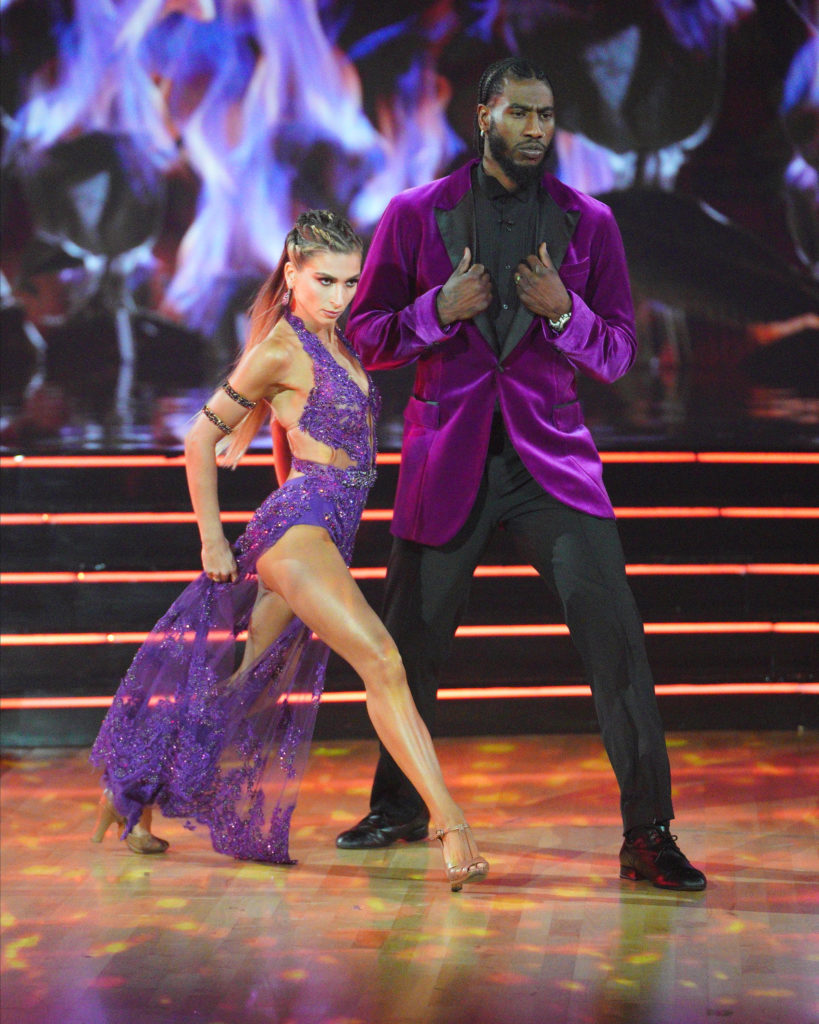
A fast costume change can be tricky for even the most seasoned professionals. But for students who may be tackling a two-minute (or less) costume switch for the first time, a step-by-step plan is necessary to keep things running smoothly and alleviate any nerves.
To help your dancers during end-of-year performances, recital season and beyond, Dance Teacher spoke with several professionals to get the inside scoop on selecting costumes, setting up a quick-change booth, and getting in and out of costumes at lightning speed.
From the costume design and prep work to managing quick-changes (and all of their unpredictability) in the moment, here are five tips to keep in mind.
Simplify Your Costumes
Daniela Gschwendtner and Steven Lee designed the costumes for the Dancing with the Stars live show and tour for more than 15 years, and during that time, they fine-tuned the art of creating quick-change-friendly costumes.
Even if you aren’t making your costumes in-house, Gschwendtner and Lee recommend prioritizing costumes with fewer pieces when shopping (and sizing up for more coverage when there’s no time for Topstick). “Anything that’s connected as a one-piece is more desirable,” says Gschwendtner of easy-to-slip-on costumes. “If you can, avoid a sleeve, leggings, long pants and shoe changes.”
Where a one-piece isn’t possible, Lee, who designs the men’s costumes on DWTS, says to get creative. “You can rig the costumes by converting buttons to Velcro, or if there’s a sock and shoe change, I’ll [have the dancer] layer the socks so they can just whip the first pair off,” says Lee.
It’s also helpful to avoid zippers whenever possible. “Zippers break, or if they don’t get zipped all the way, they’re a problem,” Gschwendtner says of the risks of rushing. “A strap and hook-and-eyes is better, because if one hook doesn’t catch, another will, and the costume will stay on.”

Designate a Quick-Change Space
No matter what kind of space you’re working with backstage, your students need to know where to race to for their changes. In the weeks leading up to a performance, Pacific Northwest Ballet’s wardrobe manager, Madeleine DeGracia, advises creating a spreadsheet to map out the costume and timing details for any quick-changes. Once backstage, DeGracia says, you can create a portable changing booth by hanging a thick sheet from a garment rack.
“In our quick-change booths, we have our costumes set out on chairs with our names on them,” says Kylie James, a dancer in Katy Perry’s Las Vegas residency show PLAY, describing another way to simplify quick-changes.
“Sometimes you have a quick-change that’s so fast, you can’t get to a booth,” DeGracia says of extreme scenarios. “In that case, I tell the crew, ‘You guys need to evacuate this area at this time.’ My philosophy is that dancers should be able to have their vulnerability be onstage and not offstage, so we try to make them feel as safe as possible within this kind of crazy situation.”
Keep an Emergency Kit Handy
“I’m decked out in emergency gear,” DeGracia says of preparing for any last-minute costume tears or straps that might pop off. “I’ve got scissors around my neck and a needle loaded with neutral-color thread on my sweater,” she says of her must-have items. “We don’t use safety pins because there’s just too great of a risk that it could open and really injure the dancer.”
As for lighting backstage, DeGracia says anything that allows you to be hands-free is preferred. “We use this product that looks like a necklace; it’s a U-shaped flexible wire, and each end has a little LED on it.”
Do a Full Run-Through
“It took us several rehearsals to get everything timed accordingly, and to figure out the best plan of attack to get into the costumes so that it really became its own set of choreography,” says James, of her eight costume changes in PLAY.
Not only does a full run-through with costumes allow your students to practice their quick-changes after dancing full-out, but it also gives you the opportunity to make adjustments where needed.
“Consider adding video content to give the dancers time to change,” Lee suggests. “Having a slower exit for the previous dance, or even having the dancers who dance next leave earlier, can add an extra 20 or 30 seconds,” he notes of small tweaks that can make a big difference.

Keep Calm and Communicate
“I’m trying to go fast, but we’re also so tired from the act we just came off from, so I try to remind myself to calm down and take a breath,” James says. “You don’t want to get so flustered that time is just flying by, or you put your leg in the wrong leg hole and end up having to restart,” she says of the importance of taking an extra breath and communicating any help that you need to whoever might be backstage helping you get dressed.
Using music cues can also be helpful in keeping track of time. “I know there’s a certain point when the music hits that if I’m not putting my shoes on, I need to start speeding up,” James adds.
Whether you have a parent backstage helping with quick-changes or the students are helping each other, DeGracia says that, ideally, the dancer will start on their headpiece while someone else helps with the costume. “I think the best approach is when the dancer removes their headpiece because they know where they’ve put the pins, so they can remove it faster. Meanwhile, the dresser starts undoing all closures at the back,” DeGracia explains. “Then, the dresser will either tap the performer or simply say ‘We’re ready to step out,’ and the performer will drop their hands so the dresser can peel the whole costume down and have them step right out. Hopefully, the other costume is ready to go, and the dancer can step in, pull it up, and finish with their hair while the dresser is settling all of the closures.”





